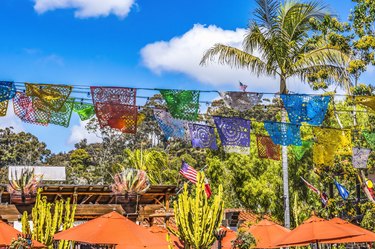
Christmas decorations in Mexico reflect the country's strong Roman Catholic traditions surrounding the birth of Jesus Christ. Vibrant and earth-toned colors, rather than red and green, typify traditional holiday decorations, many of which are handmade. Neither Christmas trees nor Santa Claus are commonly used for Feliz Navidad; rather, decorations focus on the birth of Christ, renewal and light. Mexican Christians culminate their commemorations on Christmas Eve, December 24, rather than on the official United States Christmas Day, December 25.
Handmade Mexican Nativity Scenes
Video of the Day
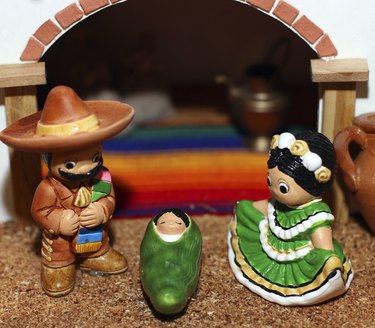
A Mexican nativity scene, or el Nacimiento, is probably the most important Christmas decoration in Mexican homes. It could be considered the main icon of the Christmas season in Mexican society. It usually occupies a prominent place in the home, and can be so large as to take up an entire room.
Video of the Day
The nativity scene is often handmade or a family heirloom, passed down from generation to generation. The baby Jesus figurine is typically not present in the scene during part of the holiday, and is added on Christmas Eve. The nativity may be called a crèche and is sometimes known as Santos.
The Traditional Mexican Christmas Piñata
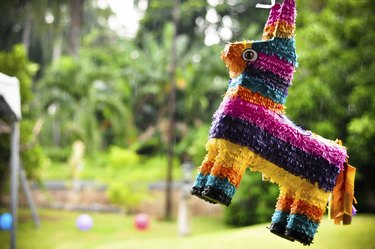
The piñata is part of the decor of many Mexican holidays, including the Christmastime Las Posadas, which means "the inns." Celebrated each evening from December 16 through 24, its nine days represent the nine months Jesus' mother carried him in her womb. Two children representing Joseph and Mary lead a procession commemorating the search for a place to stay in Bethlehem. Each evening's party ends with a seven-pointed papier mache piñata in the shape of the Christmas star. The seven points symbolize the seven deadly sins, which Christ came to abolish. Piñatas are also main features for birthday celebrations.
Path of Luminarias
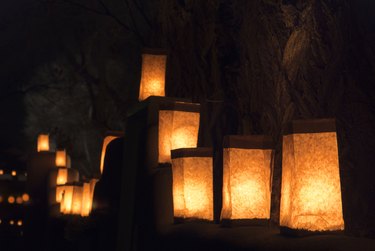
A small bonfire or lit candles in paper bags, also called faroles, are used during Las Posadas, and its culminating day, la Noche Buena, Christmas Eve. These tiny flames illuminate the path for worshipers to bring presents to baby Jesus.
The lights may feature religious themes such as angels, doves, crosses, candles or symbols of grapes, to show abundance. Other light sources are used to create Mexican Christmas ornaments as well, including red and white candles on tables and electric lights set in windows and mounted on Christmas trees.
Christmas Tree Ornaments Made by Hand
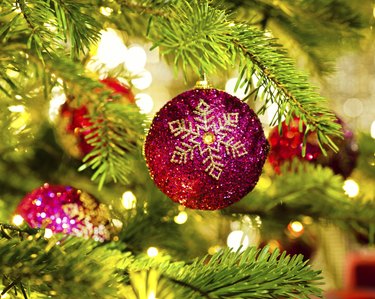
Mexican ornaments for Christmas trees, or arbolito, are often handmade of glass, straw, pottery, tin and even coal. The Christmas trees themselves are usually artificial. The homes hosting the "Posada" also decorate with Christmas ornaments.
Historic Christmas Eve Flowers
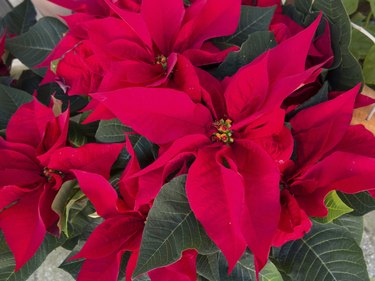
Mexican homes often display poinsettia flowers, or Flores de Noche Buena—which means Christmas Eve flower or "flower of the good night." Poinsettias have been part of Mexican Christmas decor since the 17th century, when a little child brought green branches as a gift to the newborn baby Jesus. According to legend, when the youngster laid the greenery beside the Christ Child, a large red star-shaped flower bloomed, signifying Christ's acceptance and blessing of the very special gift of the heart.